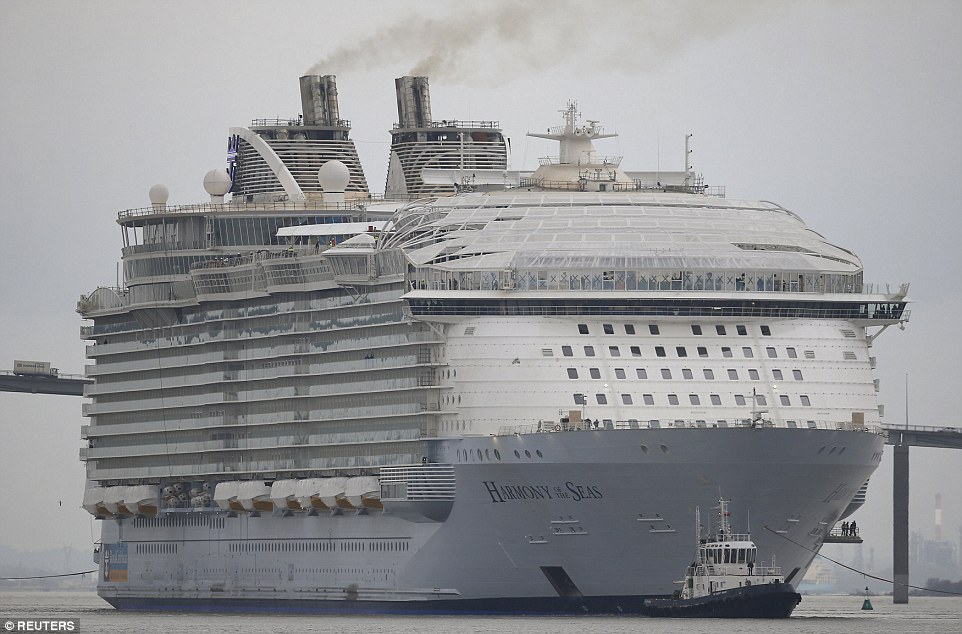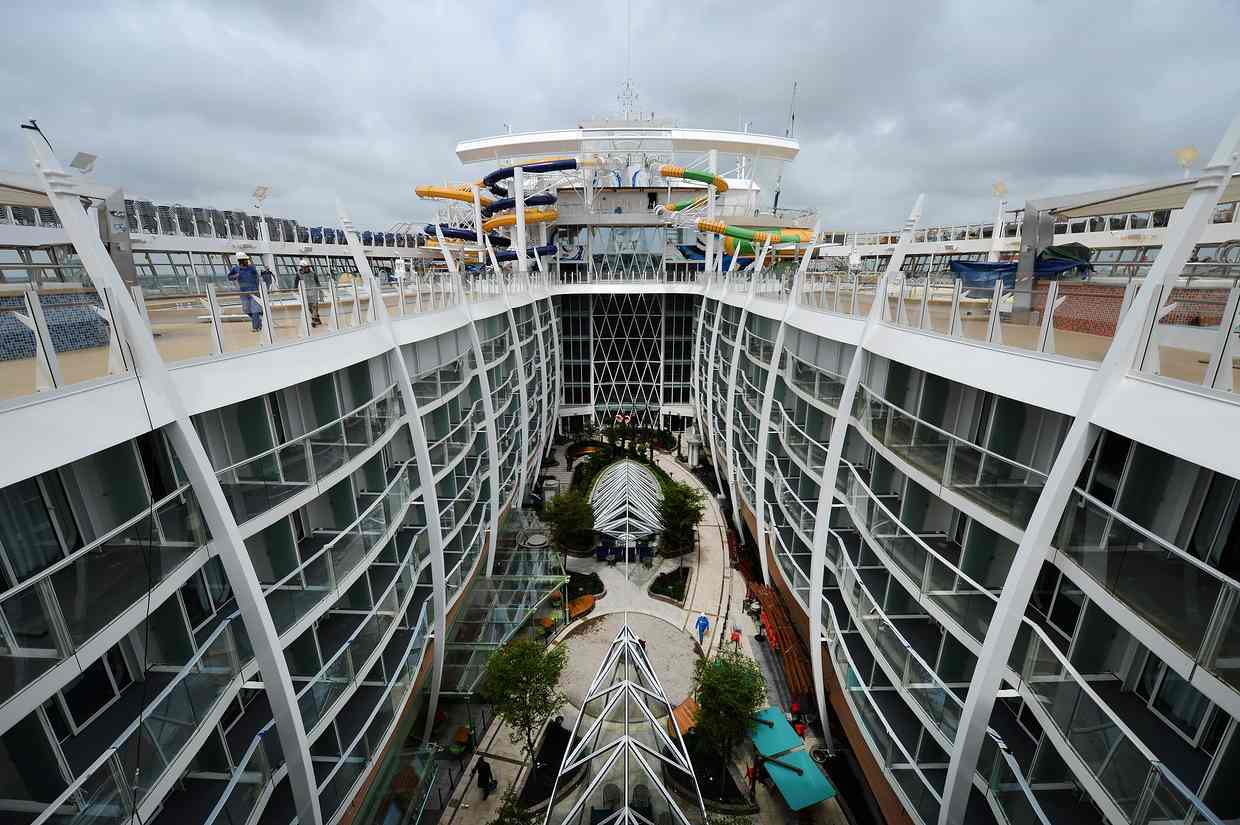Cruise liner pollutes the atmosphere with sulfur dioxide, like 376 million cars
The largest sea container ships with engines with a capacity of more than 100,000 horsepower in 2009 emitted into the atmosphere 5,200 tons of sulfur dioxide each, which is equal to the emissions of this substance from 51 million cars. And even this figure can be considered low compared with the 16-deck cruise liner Harmony of Seas: it alone "replaces" 376 million cars. Therefore, residents of the British Southampton rejoice in his departure from the port.

The market for sea cruises in recent years has experienced growth. The French company Ponant has four vessels for 250 guests each, the Queen Mary 2 has a capacity of 2,500, but the largest of these ships is the Royal Carribean Harmony of Seas. It can simultaneously relax 6780 passengers, which serve 2100 people crew. Cruise companies position their segment as a bright, clean and eco-friendly tourism. In fact, everything happens exactly the opposite .
According to the Guardian, one large cruise liner releases carbon dioxide into the atmosphere like 83 thousand cars, nitrogen oxide like 421 thousand cars, solid small particles like a million cars, and sulfur dioxide like 376 million cars with internal combustion engines. A sixteen-deck Harmony of Seas - the largest of them, three of its engines for an hour are able to spend 5212 liters of diesel fuel.
')

Southampton is the second largest container center in the UK and the busiest cruise terminal in Europe. The World Health Organization mentions Southampton as a polluted city with no production facilities in the area. Dirty air causes asthma and lung disease.
Residents of the city are sure that liners are to blame for the pollution of the atmosphere of the city. While the ship is in port, it uses special fuel with low sulfur content, but this air does not become cleaner. “Fuel oil contains 3500 times more sulfur than diesel, which is used in motor vehicles. The ships do not have such abatement technologies, such as particle filters, which are common for cars and trucks, ”say experts. Every day in the port of the city are up to five ships, which increase traffic in the city during the delivery of goods, which also affects pollution.

View of the Harmony of Seas from the upper deck
According to the organization Transport & Environment, the death of 50,000 people in Europe per year is directly related to emissions from international seagoing vessels, which costs the society 58 billion euros. In the US, Florida, pollution from ships each year results in 60,000 deaths.
In 1980, 1.4 million people embarked on cruises on liners. In 2006 - 15 million, and in 2016 this number will increase to 24 million passengers. The industry shows no signs of decline, its volume amounted to 119.9 billion dollars in 2015, and it gave jobs to nearly a million people.

The market for sea cruises in recent years has experienced growth. The French company Ponant has four vessels for 250 guests each, the Queen Mary 2 has a capacity of 2,500, but the largest of these ships is the Royal Carribean Harmony of Seas. It can simultaneously relax 6780 passengers, which serve 2100 people crew. Cruise companies position their segment as a bright, clean and eco-friendly tourism. In fact, everything happens exactly the opposite .
According to the Guardian, one large cruise liner releases carbon dioxide into the atmosphere like 83 thousand cars, nitrogen oxide like 421 thousand cars, solid small particles like a million cars, and sulfur dioxide like 376 million cars with internal combustion engines. A sixteen-deck Harmony of Seas - the largest of them, three of its engines for an hour are able to spend 5212 liters of diesel fuel.
')

Southampton is the second largest container center in the UK and the busiest cruise terminal in Europe. The World Health Organization mentions Southampton as a polluted city with no production facilities in the area. Dirty air causes asthma and lung disease.
Residents of the city are sure that liners are to blame for the pollution of the atmosphere of the city. While the ship is in port, it uses special fuel with low sulfur content, but this air does not become cleaner. “Fuel oil contains 3500 times more sulfur than diesel, which is used in motor vehicles. The ships do not have such abatement technologies, such as particle filters, which are common for cars and trucks, ”say experts. Every day in the port of the city are up to five ships, which increase traffic in the city during the delivery of goods, which also affects pollution.

View of the Harmony of Seas from the upper deck
According to the organization Transport & Environment, the death of 50,000 people in Europe per year is directly related to emissions from international seagoing vessels, which costs the society 58 billion euros. In the US, Florida, pollution from ships each year results in 60,000 deaths.
In 1980, 1.4 million people embarked on cruises on liners. In 2006 - 15 million, and in 2016 this number will increase to 24 million passengers. The industry shows no signs of decline, its volume amounted to 119.9 billion dollars in 2015, and it gave jobs to nearly a million people.
Source: https://habr.com/ru/post/394233/
All Articles